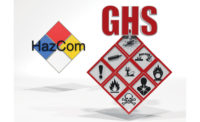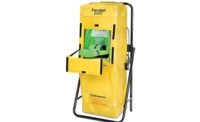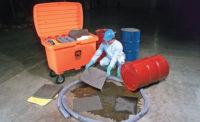Which regs rule?
First, identification audit guides are generic, not specific to any one organization or type of machinery. OSHA has specific requirements for certain types of chemicals, exposure limits, what type of PPE is required, etc. To have one booklet with all identification requirements across all regulatory bodies is impossible. For this reason, the guide often acts as a prompt to research specific regulations and requirements for the machinery and substances within the facility.
Safety professionals looking at identification must consider multiple regulatory bodies — all federal, state and local requirements — not just OSHA. There may be a local amendment to the state building code, which must also be considered against a state code. The list of possible requirements for any given area of a facility can be overwhelming. When in doubt, always refer to the local authority having jurisdiction (AHJ).
Determining which regulatory body to comply with can be a challenge. In some locations, a local ordinance may supersede a state or federal requirement due to more stringent requirements. Egress markings for example, generally fall under building code requirements, and are covered in the International Building Code (IBC). First, determine if your municipality chooses to follow the IBC. If so, which version are they adhering to? Auditors must also determine if there are local supplements to these codes. The 2012 IBC incorporates photoluminescent path markings for egress; however, New York City has its own Local Law 26. An auditor in NYC must know which regulation they are attempting to comply with before incorporating any new egress identification.
Some regulatory bodies that cover identification requirements include:
Occupational Safety and Health Administration (OSHA)
National Fire Protection Association (NFPA)
American National Standards Institute (ANSI)
International Building Code (IBC)
International Fire Code (IFC)
Department of Transportation (DOT)
Federal Highway Administration (FHWA)
Environmental Protection Agency (EPA)
Get specific
Although an identification audit can lead a safety manager in the right direction, specific information is generally not included in these guides. For example, NFPA labels and placards will be required; however, classification numbers for each regulated hazardous substance will not be included. The same goes for any hazardous substances being transported out of the facility. Labeling requirements for both DOT and OSHA must be taken into account before shipping anything classified as a hazardous substance. This adds the extra step of researching the specific substances to determine which labeling system and classification numbers to use on your placard.
Often, an identification audit involves more than just the safety manager or person performing the audit. A safety manager may not be aware of the specifics within a room, department or work area. Take boiler rooms, for example. If pipes are not labeled correctly, the auditor needs to seek out the individual responsible for the area and involve them in properly labeling the hazards in the room.
Worth the time it takes
The primary challenge for most safety managers is that identification audits are extremely time-consuming, even with a smaller facility. A quality identification audit incorporates the entire building, not simply the manufacturing or production areas. Identification audits should start with the parking lot and work around the entire building, inside and out. This includes the front office areas, restrooms, break rooms, loading docks, and any other area that any associate or visitor would have access to.
Safety identification audits are integral to the safety of associates and visitors within a facility. Properly marking hazards can prevent them from happening in the first place, and alert necessary personnel to the proper precautions to take when entering a dangerous area.



